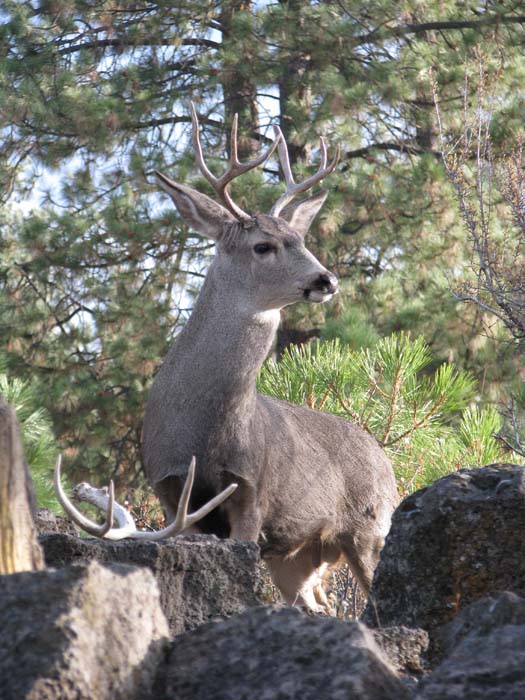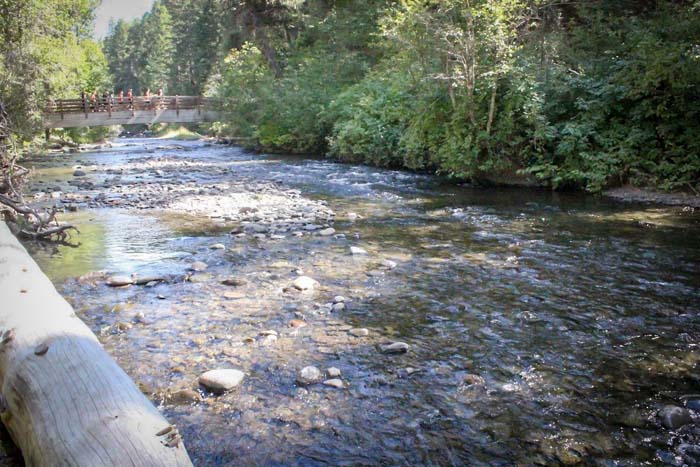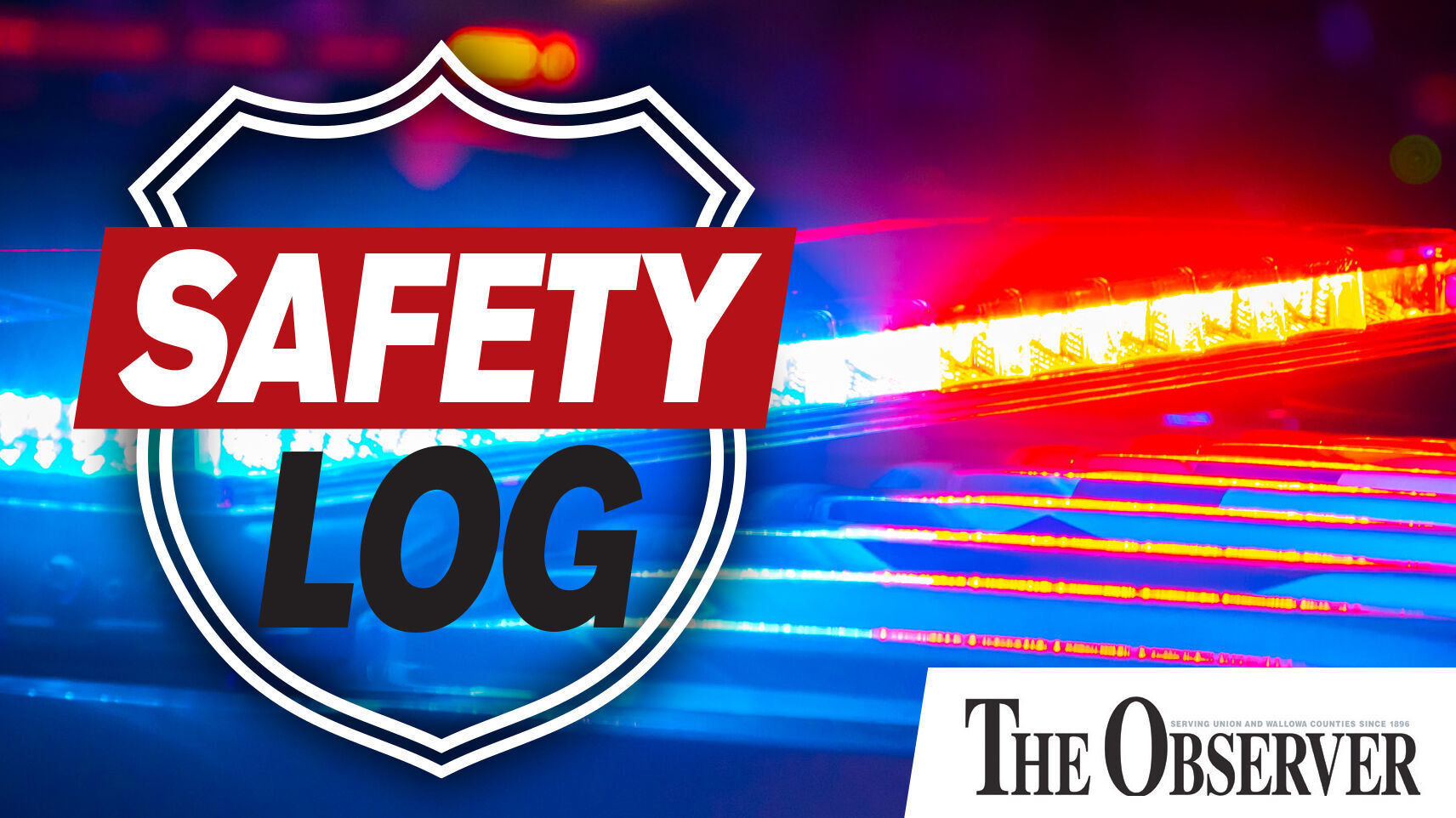Hunters required in some cases to have animals tested for chronic wasting disease
Published 5:00 pm Thursday, September 29, 2022

- A mule deer buck in Eastern Oregon.
SALEM — Big game hunters who tag a deer or elk early in the season should stop by one of the Oregon Department of Fish and Wildlife’s (ODFW) Chronic Wasting Disease (CWD) check stations the opening weekend of major rifle seasons.
Trending
ODFW staff will be sampling animals for this deadly disease recently detected in Idaho near Oregon’s northeast border.
One of those stations will be at the Elgin Rodeo Grounds, 790 S. Eighth Ave. During the opening of the rifle deer season, the station will be open daily from Oct. 2-4 from noon to 6 p.m.
The Elgin station will also be open during the opening weekend of rifle elk season, Oct. 29-31 from noon to 6 p.m.
Trending
Hunters can also contact their local ODFW office to arrange for district staff to get a sample or ask their meat processor or taxidermist. Find a list of participating ODFW offices and businesses at myodfw.com/articles/other-ways-get-your-animal-tested-cwd.
New this year, hunters transporting deer, elk or other wildlife parts who encounter a CWD check station are required, under a new law passed last year, to stop to have their animal sampled. Hunters or vehicles that are not transporting wildlife carcasses or parts do not need to stop. Hunters are not required to go out of their way to drive by a check station, though ODFW encourages every hunter transporting a deer or elk to stop by if they are in the area.
Highway signs will be posted to alert hunters to check stations and more locations will be added throughout the fall hunting seasons.
ODFW has sampled more than 24,000 deer and elk for CWD over the past 20 years as the disease began to spread from Colorado and Wyoming to other states due to animal migrations and movements of live animals and carcasses by people. Oregon’s surveillance effort has not detected CWD in free-ranging deer, elk or moose within the state. But it was found in mule deer, Rocky Mountain elk and white-tailed deer in Idaho, 30 miles from the Oregon border, late last year.
“With the disease detected in multiple species so close to Oregon, we are concerned it could already be here,” said Dr. Colin Gillin, ODFW state wildlife veterinarian. “That’s why we are asking successful hunters to please get their animal tested this year.”
The more animals the state tests, the more certain ODFW can be that the disease is not in the state. If it is detected, ODFW can deploy its response plan to contain the spread of the disease.
“There is no cure, no treatment, or vaccine for the disease and it is fatal to all animals that become infected,” Gillin said. “But if we catch it early, we will have the best chance of minimizing its spread and impact on Oregon’s big game herds.”
Once an animal is infected, it can take several years for symptoms to appear, so in most cases deer and elk that test positive for the disease will appear normal and healthy. That’s why ODFW tests as many animals as it can, including both hunter-harvested and roadkilled deer and elk. Oregon’s captive elk facilities are also assisting in the state’s surveillance by testing all of their captive animals that die beyond the age of 6 months.
Ways to get your animal sampled and see the result
• CWD Check stations. It only takes a few minutes for staff to sample your animal with the collection of a lymph node and associated hunter information.
• Several taxidermy and meat processor businesses have agreed to collect CWD samples from animals they receive from their clients and provide it to ODFW. See the list of participating businesses online or ask your taxidermist or meat processor to collect a sample.
• Make an appointment at a local ODFW office or drop in barrel.
ODFW offices participating include:
• Baker City, 2995 Hughes Lane, 541-523-5832.
• Enterprise, 65495 Alder Slope Road, 541-426-3279.
• Canyon City, 305 N. Canyon City Blvd., 541-575-1167.
• La Grande, 107 20th St., 541-963-2138.
• Ontario, 3814 Clark Blvd., 541-889-6975.
• Pendleton, 73471 Mytinger Lane, 541-276-2344.
Meat processors and taxidermists participating include:
• Elkhorn Custom Meats & Deli, 2970 H St., Baker City, 541-239-5158.
• Family Tradition Taxidermy, 1816 First St., Baker City, 541-519-2957.
• Billy Bob’s Butcher Shop, 45 S. 14th St., Elgin, 541-437-2272.
• Moncrief Wildlife Artistry, 701 N. College St., Joseph, 541-429-5701.
• Brody Turner Custom Taxidermy, 62642 Fruitdale Lane, La Grande, 541-910-8292.
Test results are expected to take up to a month. If an animal ever tests positive for CWD, a biologist or veterinarian will phone the hunter directly. Negative test results will be posted by ODFW ID number for hunters to individually check online at https://www.dfw.state.or.us/wildlife/health_program/CWD-testing/
What is CWD and can humans get it?
Chronic Wasting Disease affects members of the cervid family such as deer, elk and moose. It is an always fatal, infectious disease caused by a protein called a prion. It is spread by nose-to-nose contact between animals and through urine, feces, blood and saliva. The more animals are congregated, the easier it is for CWD to pass from one animal to another, which is why baiting and feeding deer and elk is a risky practice and discouraged to prevent disease spread.
The prions are shed in feces and urine by live, infected animals or in the carcasses of animals that died infected with the disease. Prions can also persist in soil for years, potentially infecting other animals into the future. Many states, including Oregon, ban the import of certain animal parts, such as brain and spinal column, from other states (see Parts Ban for more info). This regulation limits the chance that infected brain or spinal column will be discarded on the landscape to potentially infect an Oregon animal.
Infected animals can spread the disease for several years before showing symptoms (which include loss of balance, drooling, emaciation or wasting). So, testing apparently healthy deer and elk early in the course of the disease when they are not showing symptoms is the most effective method to catch the disease before an animal has spread the disease across the landscape and to other animals.
There is no evidence that humans can contract CWD from eating or handling meat from an animal infected with the disease. However, humans are susceptible to other similar diseases such as mad cow disease from the cattle form of this prion disease and Creutzfeldt-Jakob disease (CJD), which is a naturally occurring human-form of a similar prion disease. The Centers for Disease Control (CDC) recommends caution and provides information on preventative steps hunters can take to be as safe as possible
For more information on CWD visit https://myodfw.com/CWD
Deer herds in Northeastern Oregon have fared well over the past several months, with a normal winter in most areas and a good forage crop thanks to a cold, wet spring, according to the Oregon Department of Fish and Wildlife.
The agency recently released its big game hunting outlook for the fall. Conditions will be dry and warm at least for the first weekend of the rifle season, which starts Saturday, Oct. 1 and continues through Oct. 12.
BAKER COUNTY (Sumpter, Keating, Pine Creek, Lookout Mountain, part of Beulah unit)
Overwinter survival was good in Baker County. Animals will be the most active early in the morning and late in the afternoon when temperatures cool off. Hunters should concentrate their efforts in areas of good forage near north slopes that provide good bedding cover.
UNION COUNTY (Starkey, Catherine Creek and East Mt. Emily units)
Deer populations remain below management objectives. Catherine Creek buck ratios have been holding steady and above management objective for several years and hunters continue to have good success. However, due to lower fawn survival last winter we don’t expect to see as many yearlings in the harvest this year. Starkey unit buck ratios are at management objective; fawn survival over winter was average. East Mount Emily buck numbers are stable and above management objectives.
White-tailed deer in the district experienced a hemorrhagic disease outbreak last fall, but overall population numbers remain stable and buck ratios are high. The Grande Ronde muzzleloader hunt is a good opportunity for hunters to harvest an animal.
WALLOWA COUNTY (Wenaha, Sled Springs, Chesnimnus, Snake River, Minam, Imnaha units)
White-tailed deer numbers are good in all units. Wallowa County did experience an outbreak of Epizootic Hemorrhagic Disease (EHD), which disproportionately affected white-tailed deer populations in low elevation areas, though overall harvest success should likely not be affected. White-tailed bucks are nocturnal, but patient hunters often have success stand hunting between bedding and feeding areas.
Mule deer numbers are still well below management objective, though recruitment continues to be moderate, with good overwinter survival of fawns in most units.
Hunters interested in accessing the new Minam River Wildlife Area should note that access is by foot and non-motorized bikes only. Camping is not allowed at this time.
UMATILLA COUNTY (Walla Walla, Mt. Emily, Ukiah, eastern portion of Heppner, northern Columbia Basin units)
Mule deer survival rates were good considering the long winter. However, mule deer numbers are below management objectives (MOs) in all units, but the buck:doe ratios are all at or above MO. In the fall of 2019, Umatilla County experienced a Epizootic Hemorrhagic Disease (EHD) outbreak in low elevation areas, but as expected we are seeing a large increase in white-tailed deer which should help in hunter success.
GRANT COUNTY (Murderers Creek, Northside, Desolation, and West Beulah units)
Deer populations remain below management objectives in all units. Buck ratios were at management objective in Northside and Desolation and above management objective in Murderers Creek. Spring fawn ratios were lower than desired.
Last year, rifle hunters had below average success for Northside and Desolation but above average for Murderers Creek. Similar or slight better results are expected this year.
Deer hunters should look for areas where fire has occurred in past five to 15 years as deer tend to favor vegetation that occurs following fires. The Shake Table Fire on Aldrich Mountain, Canyon Creek Complex, and the Monument Rock burns are starting to show signs of increasing deer and may be a good place to find a buck.









